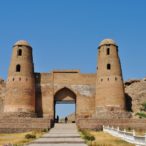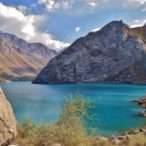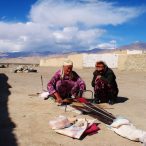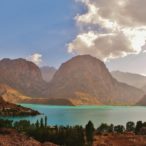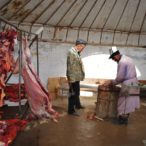Tajikistan

Official name: The Republic of Tajikistan
Population: 8 850 000
Area: 143 100 km²
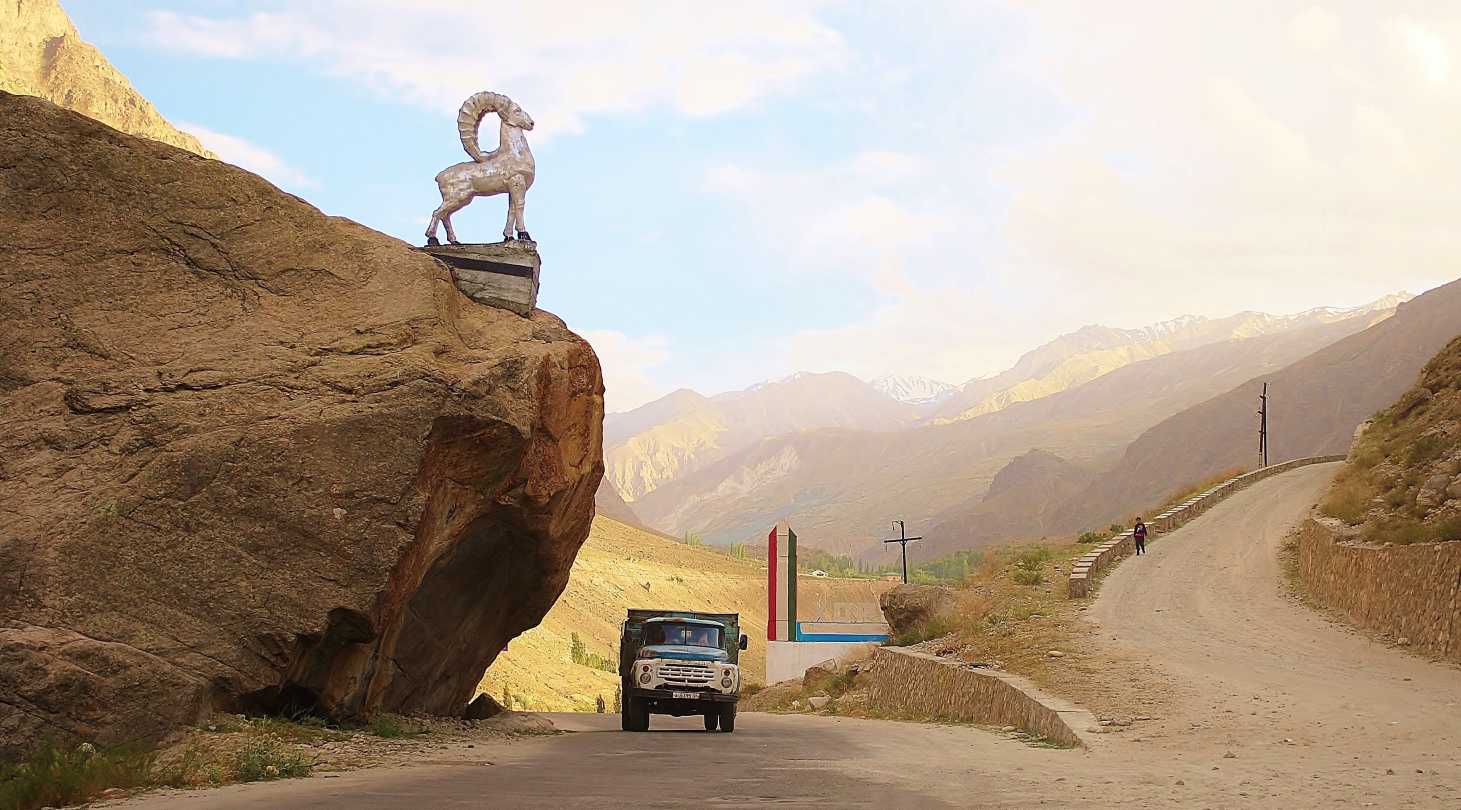
Gallery
Tourist attractions of Tajikistan, Tajikistan – the present times, brief history of Tajikistan.
Tourist attractions of Tajikistan
Tajikistan is a country of natural beauty, where 93% i covered by mountains. More than a half of this smallest country of Central Asia over 3000 metres above the sea level. I think that the main attraction here is travelling the Gorno Badakhshan autonomous region, where I recommend crossing and Pamir Highway and the Wakhan Valley and admiring its stunning views. Gorno Badakhshan was beautiful, very remote and highly adventurous, although places like Murgab or Khorog were tragically poor settlements in total wilderness. Whilst travelling the Pamir plateau I was enjoying the mountains and glaciers, I visited small villages cut off from the rest of the world, I went to hot springs, I spent time with Pamiri families and ate pamiri yak butter, and all these things were great, unforgettable tourist attractions. However, we have to remember that in order to enjoy the beautiful views and become a part of the true adventure, travellers have to put a lot of strength and preparations to overcome these remote, isolated areas. Travelling around Tajikistan should be taken as an adventure with a thrill, and its 1300km border with Afghanistan along the Pyanj river raises a question whether to cross the river or not. I know very well one man who did it (me) but just in case I do not recommend it. In the lower parts of the Pamir Highway I also recommend Gunt Valley, where colours come to life and where we can see local villages built entirely of rocks, which change their colours depending on season.
Another attraction are the Fan Mountains where I went to the high altitude turquoise Lake Iskander-Kul and the Seven Lakes, where I got to from the town of Penjikent. In the Fan mountains there are also beautiful views and local villages, where I was able to ride a donkey and have a cup of tea with the locals. In addition I experienced driving a car because the views were so beautiful every single time. Apart from the mountain views, steep abysses and turquoise lakes I also recommend the town of Istaravshan, where we can see interesting architecture and eat delicious and inexpensive mutton skewers. Not far away from Istaravshan I found a sanatorium where I had a good massage for little money. Actually only the very presence in Tajikistan is already a great adventure. There are regions in Tajikistan where we can forget about the whole world, about bills to pay, taxes, traffic and demons of everyday life. All we need are some supplies and a tent which we can set up in a remote area, like for example around Karakul lake close to the Pamir Highway or somewhere in the Wakhan Valley with a view of Afghan villages. Even with very close proximity to Afghanistan and the fact that Tajikistan is a major drug trafficking hub, it is still very safe and enjoyable.

Tajikistan – Marguzor lakes.
Tajikistan – the present times
Economy:
I entered Tajikistan from the Pamirs and I quickly realized that this is without a doubt the poorest country during this expedition. Life in Tajikistan is very difficult because although economy has improved slightly it is still hopeless. Out of all post Soviet republics Tajikistan has the lowest wages per citizens, and it is best reflected in tragic villages on the Pamir Highway, although in other towns it is also very poor. I was told that the average salary there is about $20 per month and according to official data as much as 60% of the population lives below the poverty line, that is on less than $1.25 a day. It appears that Tajiks depend mainly on what they grow by themselves, because unemployment rate is around 40% to 60%. I`m talking about herds of goats and sheep which I saw everywhere I went. Another occupation is a production of honey because only 7% of the land is suitable for cultivation. The most important crop is cotton, and it is controlled by the Tajik government. Mineral resources include silver, gold, uranium, zinc, carbon and tungsten. Industry consists only of large aluminum plant, water facilities, and small outdated factories mostly in light industry and food processing. The situation is so bad that Tajikistan imports up 60% of food. Tajikistan relies heavily on investments from outside. For example, together with the Russian Government they built a dam on the river to produce hydro-electric power. The Iranian government decided to pay for tunnels in the mountains, what saves a few hours driving. Whilst touring Tajikistan I had to circle around high mountains, that’s why tunnels are a great idea. Tourism industry is unfortunately not very popular because of very poor infrastructure, what makes Tajikistan a destination only for the tough.
Hard currency which flows into Tajikistan comes from more than a million Tajiks who work mainly in Russia. Thanks to this country’s economy has improved a little bit, what only means that people working in the government will eat even better. It has been calculated that as many as 15% of households live off the money earned in Russia. Given the small population of Tajikistan these are tragic figures because out of almost 3.5 million workforce about 1.5 million works abroad. A huge part of the Tajik budget is wasted on sealing the 1300km border with Afghanistan. For this reason Tajikistan is a paradise for drug smugglers, and about 50% of the country’s income comes from drugs. Electing a president of Tajikistan is a joke because duties are simply transferred from father to son. The country is known for its very poor economy, “well-developed” corruption, huge foreign debt and temporary interruptions in electricity supply. Apart from that all reforms are carried out very slowly because Tajikistan beats records of bureaucracy. Tajikistan has a very weak currency called “somoni”, which is rather stable against the dollar. Inflation has improved dramatically, from around 33% in the first years of the XXI century to about 7% today. Tajikistan also maintains trade cooperation with Russia, Turkey, Iran, the Netherlands, China and many other countries. Tajik police pulls money out of drivers just because they are drivers. Everyone who gets stopped must pay a little bit.

View at an Afghan village seen from Tajikistan.
Education:
Education in Tajikistan is compulsory and free from 7 to 17 years of age, but because of the bad economic situation and danger in certain parts of Tajikistan not all children go to school. Higher education is paid. Literacy stands at a high level of 97.7%, and in this respect women and men are equal.
Health:
Health system in Tajikistan is one of the worst in Asia, and the main problems are: lack of sufficient funding, low salaries in health care, poor nutrition, contaminated drinking water, cholera, malaria (in some parts), tuberculosis and typhoid. After the collapse of the Soviet Union many Russian doctors left Tajikistan, what resulted that the country has the lowest number of doctors with regard to the population. The main causes of death are cardiovascular diseases, respiratory disorders, and infectious and parasitic diseases. Tajikistan also suffers from a large infant mortality and high mortality of children under 5 (about 40 per 1000) and maternal death during childbirth (64 per 10,000). There is only one midwife per 430 childbearing women, what makes child deliveries in Tajikistan a life threatening experience. In addition health care is not free.
Drug addiction is also a big problem and Tajikistan is full of it. Approximately 60,000 – 100,000 people are addicted and the government does not have any plan to combat the epidemic. There are currently about 5000 people in Tajikistan who live with HIV and 60% are caused by drugs. It is the most evident in the Gorno Badakhshan autonomous region, where poverty is rough and drugs are smuggled heavily. I’ve been there.
Culture/Religion:
Based on culture, race and language Tajik people have Persian roots, and are only partially related to Aryan peoples. Unfortunately because of years of mixing with people of Turkish origin, it is hard to distinguish pure blooded Tajiks from the racially impure. Tajikistan is a home of 80% of people who are of a Tajik origin, there are 15% Uzbeks, 3% of Russians, 1% of Kyrgyz people, and small Armenian and German communities. The main religion is Islam, but in my opinion it is seen more as a cultural heritage of Tajikistan, rather than religion. Islam in Tajikistan I describe as mild and it has nothing in common with countries like Saudi Arabia or Pakistan. Many ancient cities on the ancient Silk Road which today belong to Uzbekistan are also seen as cultural heritage by Uzbek people. There are also Christians in Tajikistan but they represent a definite minority. Whilst travelling around Tajikistan it was hard to not to notice the national costumes. Women wear long dresses with big decolletages and shawls on their heads, and men wear small square hats, shirts and vests.

Nagorno Badakshan – road on the Pamir Highway in Murgab.
Men are considered to be protectors of their wives, mothers and daughters and they maintain the family, whilst the women`s obligation is to do the housework and take care of children. On the other hand in Tajikistan it is culturally acceptable for a woman to take care of a man, although on average they earn about 30% less. In general men and women are equal, although there are only about 27% of women on high positions. I think it makes sense because women apart from making their dreams come true should also give birth to children, who would extend the culture and the very race of that country. There is no Indian style caste system in Tajikistan, although the caste system creates itself according to financial and social status. Matchmakers help to get young couples together and parents want their sons or daughters to marry someone who has more money. Marriage is an important religious ceremony and after the wedding young wife moves to her husband’s family, and her parents have to be sure that she would be taken care of. Meanwhile the bride’s family watches over the economic situation and the way of life in a new home of her daughter, and mother in law is seen as authority for a young wife. There are also about 20% of polygamous marriages in Tajikistan and often women want to be second wives of wealthy men. Divorce is rare and usually the first wife remains faithful to her husband when he takes a second wife. It is also customary that men can not enter a house where women are on their own, and a young boy and a girl can not be left alone.
There are also very specific cultural elements of Gorno Badakshan autonomous region. These are for example traditional Pamiri socks (I bought three pairs and I`m very happy) and traditional architecture of Pamiri home. Once I reached Ishkashim I spent a night in a home with a local family of my driver. I lived in traditional Pamiri house, which was built according to certain principles. The explanation of it is quite a long story but I will say in general that construction of Pamiri houses is based on philosophical and religious principles dating back from over 2500 years ago. The traditional elements are the pillars and a roof, which each part has its own religious and philosophical importance. There is a hole in it made on the basis on the stacked squares. Another important element is the platform running around the room, which is used for sleeping and eating. Below the platform there are also lockers and sometimes even a small fireplace. By the way, a fireplace for baking bread is usually outside, and every family has it.
Tajikistan has also a lot of sports and all of them are associated with outdoor activities in the mountains. These include: rock climbing, mountain excursions and mountain biking. Football is also very popular. Tajik cuisine is a combination of central Asian dishes from Iran, but also plov, lamb skewers, fruit, halva, bread baked on the street and in their homes, and green tea. Tajik literature is considered to be Persian literature, especially that both of those countries used to have many poets who were Persian and Tajik at the same time.
Unfortunately a big part of a Tajik culture is also about giving bribes to officials, judges and people in senior positions, what is socially acceptable. There is also a special etiquette associated with giving bribes, which sometimes requires a third person for the purposes of indirect negotiations. I know it sounds like a joke but I’m very serious. Years of the Soviet Union, generations growing up in the company of the KGB, great unemployment, poverty and corruption have developed unique customs.

Tajikistan – I’m waiting for a hitch to Uzbekistan.
Media:
Media in Tajikistan is not free. There is no freedom of publication and expression, and journalists are intimidated, beaten and murdered. In Tajikistan writing or talking about the president in a bad way results in accusations of defamation and imprisonment up to 5 years or fines. Many websites are blocked and president Rahmon who is only able to gain weight and giving fake smiles keeps his regime with an iron fist. All newspapers and TV stations are controlled by the government and the usual news are about the “good” president Rahmon and “bad” opposition. On the press freedom index Tajikistan takes 122nd place and it gets worse every year.
Environmental problems:
The major natural hazards in Tajikistan include: high concentration of salt and agricultural chemicals in the ground and surface waters, air pollution from factories and vehicles in large cities, water pollution caused by industrial waste, poor water management and soil erosion. Tajik rivers flow through infamous factories that pour their waste into the rivers and then poison gets to other rivers and to the Aral Sea. Strong winds from the deserts in Turkmenistan and Uzbekistan cause air pollution. Also forests are cut out to enlarge areas suitable for pastures for the animals. As if that was not enough Soviets built an uranium mine which left behind radioactive wastes in the north-west of Tajikistan. Tajikistan also mines gold and other minerals and each one of them leaves toxic wastes. Water management and all of the above are big problems in Tajikistan, whilst the government has a very relaxed attitude. Very bad economic situation and ignorance of the president of Tajikistan seem that the environment does not matter. The civil war was in a certain way good, because when the whole industry collapsed the state of the environment improved.
History of Tajikistan
Tajiks were once a part of the Persian Empire and their language is almost identical with Persian. Alexander the Great conquered areas of Tajikistan around 333 BC and between the VII and VIII century Tajikistan was conquered by the Arabs who introduced Islam. Then Tajikistan was ruled first by the Uzbeks, then Afghans and then other kingdoms which were succeeding one after another. An important event was the conquest of the entire area today Tajikistan by Genghis Khan between 1219-1221. After death of Genghis Khan the area of ??Tajikistan was ruled by his grandson until the fourteenth century, when Timur created a great empire with its capital in Samarkand. In the XVI century Tajikistan was conquered by Shaybanids, who had their capital in Bukhara. This led to a split of Tajikistan into smaller khanates, which had their origins in the Fergana Valley. What we see today as the territory of Tajikistan, in the XVIII and XIX centuries was divided into khanates of Kokand and Bukhara.
The further history of Tajikistan was simply based on changing a ruler. For example in 1863 Russia conquered the khanates and established its dominance in Central Asia. The two major cities: Bukhara and Samarkand were incorporated into Russia in 1868. Kokand ceased to exist and the border with Afghanistan was established on the basis of agreement with England. Part of Tajikistan remained in the Emirate of Bukhara and the other part in Turkestan. When in 1916 tsar wanted to incorporate conquered nations into his army, then the revolution broke out throughout Central Asia, which cost many thousands of lives. In 1924 the territory of Tajikistan became the territory of the Tajik Autonomous Soviet Socialist Republic, which was administrated by the Soviet Republic of Uzbekistan, and finally in 1929 Tajikistan reached the status of a separate republic. There was also a problem with establishing borders in Central Asia, which until then were only contractual. The problem was of such nature that for centuries people living in areas of Central Asia used languages ??derived from Turkish and Persian, that`s why separation on the basis of the language was in theory quite simple. Nevertheless the Tajik cities of Samarkand and Bukhara became part of Uzbekistan, and victimised Tajikistan got smaller towns and land unsuitable for cultivation. People were forced to choose one of the nations. During World War II about 300.000 Tajiks were incorporated into the Red Army to fight against the Nazis. In later Soviet times Tajikistan was the poorest and the least developed of all the republics, and in my opinion it is also today. The poorest was and still is the Gorno Badakhshan Autonomous Region.

Klub seniora w Tadżykistanie.
The breakthrough came in 1991 when together with the collapse of the Soviet Union Tajikistan became an independent country. But it was only the beginning of many internal problems. The good thing for Tajikistan was that Tajik language was widely promoted and Tajiks occupied seats in the government alongside Russians. Almost immediately after gaining independence civil war erupted, which cost about 100.000 lives and 1.2 million lived in poverty in Tajikistan and outside of the country. The whole country was devastated. Jews and Russians fled because of better prospects in the west and the other republics, and because of fear of persecution. In 1994 Emomalii Rahmon came to power and ceasefire was achieved in 1997. It is not a secret that Rahmon`s second election was due to corruption, which apart from drug smuggling is Tajikistan`s specialty.
Map
Location
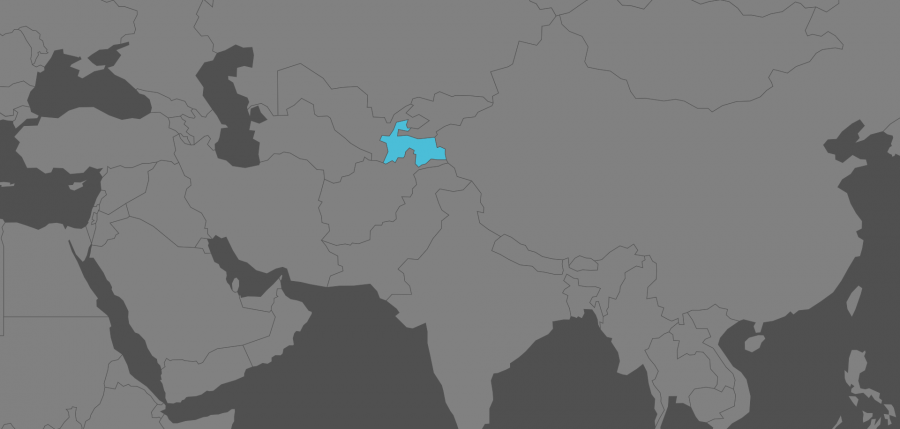
Practical information
Tourist Visa: Unfortunately Tajikistan did not follow the other three Central Asian republics, and did not abolish visas. Nevertheless, it is easier than before, because from 2016 Tajikistan offers e-visas for $50, which can be produced in about 2 days. Permits for Pamir can be made separately for $20, or in Tajikistan in Dushabne, at OVIR office for 20 somoni (around $2). This decision however should depend on our travel plan. Single entry tourist visas are valid for 45 days. For visas and permits for Pamir, please apply via https://www.evisa.tj/index.evisa.html.
A Tajik visa can also be obtained at the airport, but then only for stays up to 30 days. I advise to get a visa and GBAO permit together via the internet, because then there is a longer stay and the permit is issued for the validity of the visa, that is for 45 days. If you get the GBAO permit in Dushanbe, you have to take into account the mood of an immigration officer, who can issue a permit only for 15 days.
In 2010 I was lazy, that`s why I organized everything in London. The visa was very easy to obtain but expensive. For a one month single-entry visa I paid £60 and for the permit to the Upper Badakhshan Autonomous Region I paid an additional £50. I filled the form, I added my photo and after a week I had the visa in my passport, together with a GBAO permit. Two blank pages in a passport are needed. The official invitation is no longer needed. Registration in OVIR on a tourist visa up to 30 days is also no longer needed. My advice is to remember that if the Tajik police persuades us that it is necessary, it is only under a false reason of taking bribes. It was also possible to get the visa at the airport in Dushanbe.
Security: from what I’ve experienced the Polish and the British Foreign Office like to scare us on how dangerous it is over there. They say that there is a high risk of crime, but I travelled around the whole of Tajikistan, from the Pamir Hghway through Dushanbe and Fergana Valley. I was cut off from the world and walked at night in villages and cities and never had any problems. The only danger is a reckless journey through the upper region of Badakhshan due to demanding conditions. Another problem is the police looking for a source of income from tourists. There are also con artists posing as police or even pretending to be KGB in order to extort money. I personally came across a case like that. Besides, I wish you a happy road.
Getting around the country: depends on which area you want to move around. In the Upper Badakhshan Autonomous Region, transport is rather a rarity, especially on the stretch from the border town of Kyzylorda to Murgab. Besides that, there are also occasional Chinese trucks and hitchhiking opportunities, and the best bet is your own bicycle. There is also the option of catching a shared taxi or shared minibus travelling between China and Khorog to Murgab, but you can get old and gray whilst waiting for the required 8 or 12 passengers. Shortly speaking, Tajik transport in the Pamir Highway and the Wakhan Valley seriously tests patience, and you have to be lucky, show great innovation and $ $ $ $ $. It is also possible to travel on a donkey, what I also experienced many times.
From Khorog to Dushanbe there are only shared taxis and I advise you to pay $50 per seat. From Dushanbe to other cities in the west and north of Tajikistan there are also only shared taxis. It is also very difficult to get to Iskander-Köl lake, because organized transport does not exist. Shared taxis or rare hitchhiking only
Prices: (in 2010 when £1 = around 7TJS) in Tajikistan the most expensive is transport, and especially in the Upper Region of Badakhshan. It gets cheaper if you have time, patience, your own bike or a donkey. For rooms I do not advise to pay more than $10 per night but sometimes I paid $3 and sometimes nothing because I slept in a tent. The food is very cheap. I think that on a low budget you can spend $20 a day or even nothing and live off your supplies, living around rabbles of the Pamir Highway or another remote area. Prices go down if you can speak some Russian, but also if you have a Polish passport.
Climate: varies widely as well as Tajikistan itself. The climate is continental, subtropical and tropical dry. The temperature in summer and winter is highly variable depending on the height. At low fields it ranges from -10°C to 3°C in winter, and up to about 30°C in summer. In the Pamirs in summer air temperature ranges from 5°C to 10°C and in winter from -15oC to -20oC. There are also strong winds and much lower temperatures at higher altitudes.



